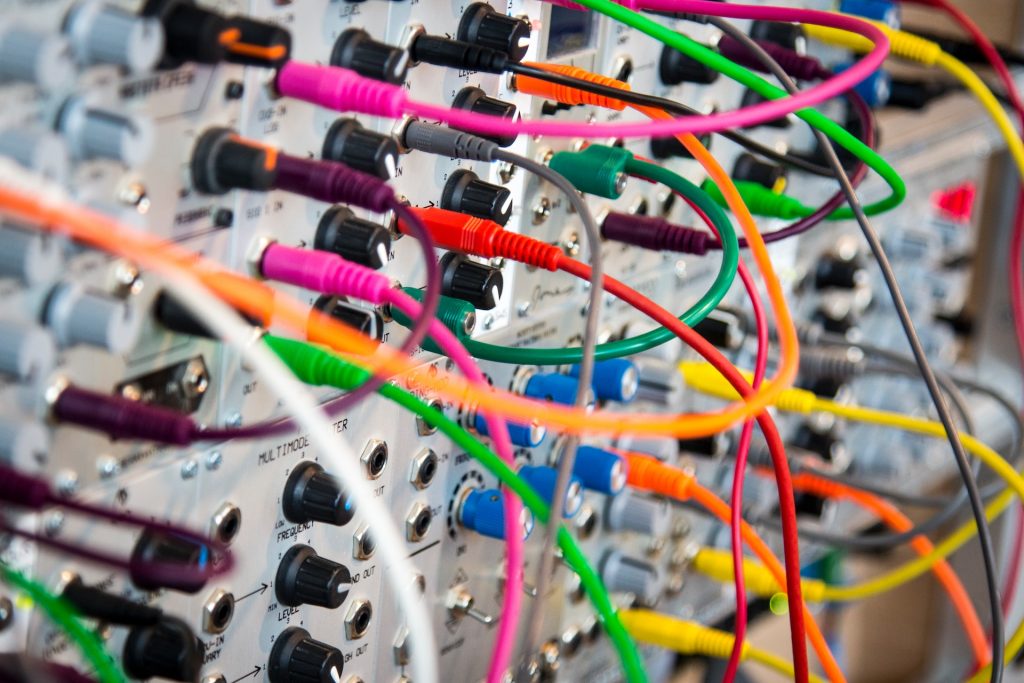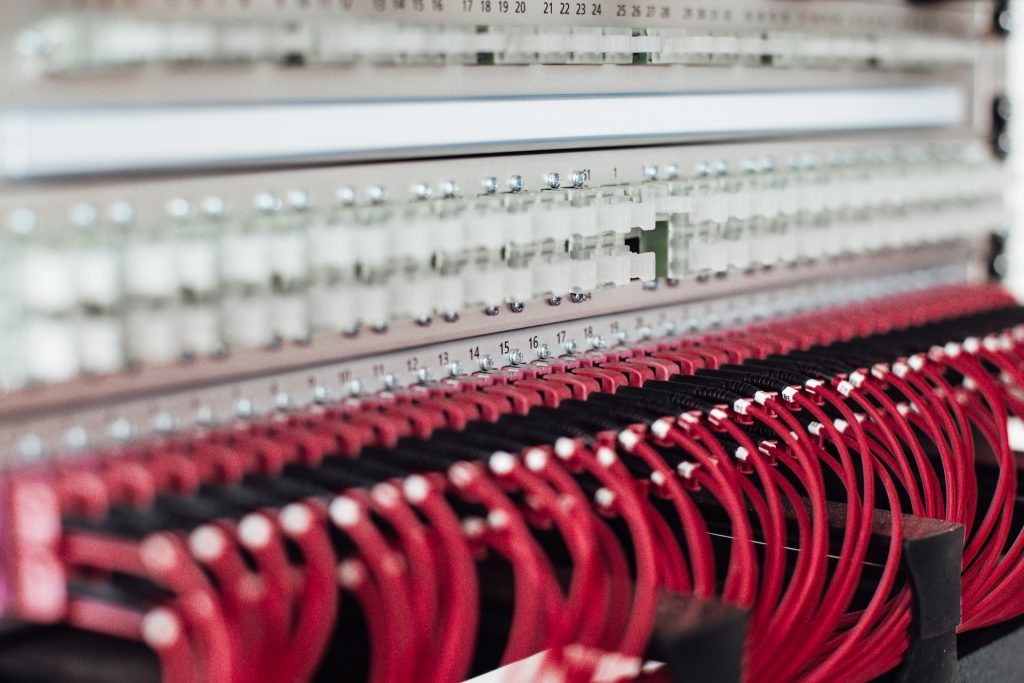
Which Data Pipeline Architecture Is Best For Your Company?
Jerry Wallis
18 min read

Data pipeline architecture is the foundation of modern data-driven businesses. It’s an essential part of the data engineering process that enables organisations to collect, process, and transform data from various sources to generate meaningful insights. A well-designed data pipeline architecture can help companies make informed decisions and gain a competitive advantage in their respective industries.
However, choosing the right data pipeline architecture for your company can be a daunting task. There are various factors to consider, such as the volume and velocity of data, the complexity of data sources, and the business requirements. Moreover, there are different types of data pipeline architectures available, each with its own set of advantages and disadvantages.
In this blog post, we discuss the key considerations for choosing a data pipeline architecture and compare two main types of data processing – batch processing and real-time processing. We also explore the pros and cons of common types of data pipeline architecture and the best practices for designing and implementing a data pipeline architecture that fits your business needs.
So, if you’re looking to optimise your data processing capabilities and maximise your business value, keep reading to find out which data pipeline architecture is best for your company.
What Is Data Pipeline Architecture? 🖇️
Data pipeline architecture refers to the process of collecting, processing, transforming, and storing data in a structured manner. It’s the foundation of modern data-driven organisations, allowing businesses to extract meaningful insights from their data and make informed decisions. In simple terms, a data pipeline is a series of connected components that work together to move data from one place to another.
Data pipeline architecture is made up of several stages, including data ingestion, data transformation, data storage, and data delivery. A data pipeline architecture is the design and implementation of this pipeline, taking into account the unique needs and requirements of each organisation. It provides a framework for managing data, ensuring that it’s clean, accurate, and accessible. It allows organisations to process large volumes of data quickly, enabling faster decision-making and improved business performance.
Scalability is a key benefit of data pipeline architecture. As businesses grow and generate more data, they need a data pipeline architecture that can handle increased data volumes and complexity. With the right architecture in place, businesses can easily scale their data pipelines to meet their evolving needs, ensuring that they can continue to extract value from their data.
A data pipeline architecture is also critical for ensuring data accuracy and consistency. By implementing a standardised approach to data processing and transformation, organisations can avoid data discrepancies and errors that can lead to costly mistakes. In addition to scalability and accuracy, data pipeline architecture also plays a crucial role in ensuring data security and compliance.

With the increasing importance of data privacy and security, organisations need to have a data pipeline architecture that can protect sensitive data and comply with regulations, such as GDPR and CCPA, two common data protection procedures. GDPR stands for General Data Protection Regulation, which is a privacy law enacted by the European Union, and CCPA stands for California Consumer Privacy Act, which is a privacy law enacted by the state of California in the United States. While these are international laws, they can still affect Australian companies that do business with or collect data from individuals in the EU and in California, respectively.
All in all, data pipeline architecture is the backbone of modern data-driven organisations. It enables businesses to manage their data effectively, providing a framework for data collection, processing, transformation, storage, and delivery. By implementing the right data pipeline architecture, organisations can scale their data pipelines, ensure data accuracy and consistency, and comply with data privacy and security regulations.
Comparing Batch Processing & Real-Time Processing ⚖️
Two of the most common processing techniques in data pipelines are batch processing and real-time processing. Both have their advantages and disadvantages and choosing the right one depends on the specific use case and business needs.
📦 Batch Processing
Batch processing is a technique that processes data in large batches or groups. Batch processing is a non-real-time processing method where data is collected and stored until there is enough to process. Once a sufficient amount of data has been accumulated, it’s processed in bulk, typically in scheduled intervals or at specific times. Batch processing is commonly used for processing large volumes of data, such as data from logs, databases, or files.
Advantages Of Batch Processing
- Scalability: Batch processing allows for processing large volumes of data, which makes it highly scalable. It also enables parallel processing, where the data is divided into smaller chunks and processed simultaneously.
- Cost-Effective: It’s generally more cost-effective than real-time processing, as it requires fewer resources.
- Fault-Tolerant: It’s fault-tolerant, as it can handle errors and exceptions during processing.
Disadvantages Of Batch Processing
- Latency: Batch processing is not real-time, and data processing may take minutes, hours, or even days. This delay may cause data to become outdated.
- Limited Insights: It provides a snapshot of the data at the time it’s processed. It does not provide real-time insights into changing data.
- Complexity: It requires a more complex data pipeline architecture and data storage system, which can make it challenging to manage and maintain.
⏱️ Real-Time Processing
As the name suggests, real-time processing processes data in real-time or near real-time. It’s a processing technique that processes data as soon as it is generated, making it more suitable for time-sensitive data. Real-time processing is commonly used for processing data from sensors, Internet of Things (IoT) devices, or social media feeds.
Advantages Of Real-Time Processing
- Real-Time Insights: Real-time processing provides real-time insights into data, making it more useful for real-time decision-making.
- High Accuracy: It provides highly accurate and up-to-date data, making it more reliable for real-time decision-making.
- Faster Response Times: It allows for faster response times, as data is processed immediately, making it more suitable for time-sensitive data.
Disadvantages Of Real-Time Processing
- Scalability: Real-time processing is not as scalable as batch processing, as it requires more resources to process data in real-time.
- Cost: It’s generally more expensive than batch processing, as it requires more resources and infrastructure to process data in real-time.
- Complexity: It requires a more complex data pipeline architecture and data storage system, which can make it challenging to manage and maintain.
Between batch processing and real-time processing, your choice depends on the specific use case and business needs. Batch processing is more suitable for processing large volumes of data that do not require real-time insights. Real-time processing, on the other hand, is more suitable for processing time-sensitive data that requires real-time insights.

Data pipeline architectures are essential for companies that need to process and analyse large amounts of data in real-time or batch processing. A well-designed data pipeline can transform raw data into useful insights, which can help organisations make informed decisions and improve their performance. However, there are several data pipeline architectures to choose from, each with its pros and cons. Read on for some of the most common data pipeline architectures, along with their benefits and drawbacks.
Extract, Transform, Load (ETL) Architecture 🏛️
The ETL architecture is the most traditional data pipeline architecture. It involves three stages: extracting data from various sources, transforming the data to fit the required format, and loading the data into a target system. The ETL architecture is commonly used in batch processing, where large volumes of data are processed at regular intervals.
⭐ Pros Of ETL Architecture
- ETL is a well-established architecture that has been used for decades, making it a reliable and trusted approach.
- It can handle complex transformations, such as joining multiple data sources and filtering data.
- It’s highly customisable, allowing organisations to tailor the architecture to their specific needs.
⛔ Cons Of ETL Architecture
- ETL is slower than real-time processing and is not suitable for time-critical applications.
- It requires a lot of storage space as it involves storing intermediate results during transformation.
- It’s not suitable for handling unstructured data sources.
Extract, Load, Transform (ELT) Architecture 🏰
The ELT architecture is similar to the ETL architecture, but the order of the stages is reversed. In the ELT architecture, data is extracted from various sources and loaded into a target system before being transformed.
⭐ Pros Of ELT Architecture
- ELT is faster than ETL since the data is loaded first and then transformed.
- It’s more flexible than ETL since the transformation is done in the target system, which can handle complex transformations.
⛔ Cons Of ELT Architecture
- ELT requires more storage space than ETL since the intermediate results are stored in the target system.
- It’s not suitable for handling unstructured data sources.
Event-Driven Architecture 📢
The event-driven architecture is designed for the real-time processing of data. It involves capturing events as they occur and processing them in real-time. This architecture is commonly used in applications that require real-time data processing, such as fraud detection and sensor data processing.

⭐ Pros Of Event-Driven Architecture
- Event-driven architecture is highly responsive and can process data in real-time.
- It can handle unstructured data sources.
- It’s highly scalable and can handle large volumes of data.
⛔ Cons Of Event-Driven Architecture
- Event-driven architecture is complex and requires specialised expertise to implement and maintain.
- It can be expensive to implement since it requires specialised hardware and software.
Microservices Architecture 🔧
Microservices architecture is a modular approach to data pipeline architecture. In this architecture, the data pipeline is divided into several microservices, each responsible for a specific task. Each microservice can be developed and deployed independently, making the architecture highly flexible and scalable.
⭐ Pros Of Microservices Architecture
- Microservices architecture is highly scalable and can handle large volumes of data.
- It’s highly modular, making it easy to maintain and update.
- It can be developed and deployed independently, making it highly flexible.
⛔ Cons Of Microservices Architecture
- Microservices architecture can be complex to implement and requires specialised expertise.
- It can be expensive to implement since it requires specialised hardware and software.
Lambda Architecture 🏗️
Data processing has become an essential part of many businesses today. The challenge, however, lies in managing and processing vast amounts of data in a way that is both efficient and effective. Lambda Architecture is an emerging solution that combines both batch and real-time processing to address this challenge.
Lambda Architecture is a data processing architecture that combines batch and real-time processing to handle massive amounts of data in a distributed environment. Lambda Architecture is designed to be fault-tolerant, scalable, and highly available, making it an ideal solution for processing large volumes of data. It consists of three layers: batch layer, speed layer, and serving layer.
Lambda’s batch layer processes large amounts of data in a distributed environment. Data is processed in parallel, and views are generated. The batch layer is not real-time, so the views generated are not up-to-date. The speed layer processes data in real-time. It receives data in real-time and generates real-time views, which are used to update the batch layer views. The serving layer serves data to end-users and applications. It combines the views generated by the batch layer and the speed layer to provide a comprehensive view of the data.
⭐ Pros Of Lambda Architecture
- Lambda architecture is highly flexible and can accommodate various data processing needs.
- It’s designed to be highly fault-tolerant and includes redundant components that can automatically take over in case of a failure, ensuring continuous data processing.
- It’s highly scalable, as it can handle large volumes of data without compromising on performance.
- It provides fast and real-time data processing by using a combination of batch and stream processing.
⛔ Cons Of Lambda Architecture
- Lambda architecture is complex and requires expertise in both batch and real-time processing.
- It can be expensive to implement and maintain, as it requires multiple components and resources to operate effectively.
- It may suffer from data inconsistency issues, as real-time and batch processing may generate different results due to varying processing times.
- It may experience latency issues when processing large volumes of data, as real-time processing may introduce some delays in data processing.

Lambda Architecture can process data in real-time, making it an ideal solution for real-time applications. Additionally, it can be implemented using open-source technologies, making it a cost-effective solution for businesses. This architecture is used in various industries, including finance, healthcare, e-commerce, and more, for detecting fraud in real-time, processing data generated by IoT devices in real-time, and analysing social media data, among other use cases.
Kappa Architecture 🕵️
With the growth of big data and the need for real-time analytics, companies are investing heavily in data pipeline architectures that can handle large volumes of data in real-time. Kappa architecture is one such architecture that has gained popularity in recent years for its ability to simplify real-time data pipelines.
Kappa architecture is a modification of Lambda architecture, which was introduced by Nathan Marz in 2014. Lambda architecture was complex and required two different systems to be maintained: one for batch processing and one for real-time processing. It simplifies this architecture by eliminating the batch processing component, thus making the data pipeline more streamlined and easier to maintain.
Kappa architecture is designed to handle real-time data streams in a simplified manner. It consists of three main components: the data stream, the processing layer, and the storage layer. The data stream component is responsible for receiving the data in real-time from various sources such as sensors, social media, or IoT devices. The processing layer is responsible for processing the data in real-time, and the storage layer is responsible for storing the processed data.
Kappa architecture is built on the premise of using a single processing layer to handle both real-time processing and batch processing. This is achieved by storing all incoming data in an immutable log, which is then processed in real-time using stream processing frameworks such as Apache Kafka or Apache Flink. The processed data is then stored in a database or data warehouse for further analysis.
⭐ Pros Of Kappa Architecture
- Kappa architecture is simpler than Lambda architecture, which makes it easier to implement and maintain.
- It’s highly scalable, being able to scale horizontally by adding more nodes or vertically by adding more processing power.
- It’s generally more cost-effective than Lambda architecture as it requires fewer resources and components to operate.
- It excels in real-time processing, providing timely data processing and immediate feedback for time-sensitive applications.
⛔ Cons Of Kappa Architecture
- Kappa architecture is limited to real-time processing only, which may not be suitable for applications that require batch processing or complex transformations.
- It may suffer from data inconsistency issues as there is no batch processing to validate data integrity.
- It does not have the same level of fault tolerance as Lambda architecture since it relies solely on real-time processing.
- It has a single pipeline, which can be a single point of failure. If the pipeline goes down, the entire system will be unavailable.
In short, Kappa architecture is a simplified version of Lambda architecture that is designed to handle real-time data processing. It offers several advantages over traditional batch processing systems, including simplicity, efficiency, and scalability. As companies continue to invest in data pipeline architectures, Kappa architecture is likely to become an increasingly popular choice for real-time data processing.
Key Considerations For Choosing A Data Pipeline Architecture 💁♀️
Choosing the right data pipeline architecture is a critical decision that can impact the efficiency, scalability, and flexibility of your organisation’s data processes. Here are some of the key considerations you need to keep in mind when choosing a data pipeline architecture.

📈 Data Volume & Velocity
The volume and velocity of your data are two critical factors to consider when choosing a data pipeline architecture. The pipeline you select should be capable of handling the volume of data you expect to process, that too in real-time if necessary. In other words, the architecture should be scalable to meet the current and future demands of your organisation.
💎 Data Quality
Data quality is another critical consideration when choosing a data pipeline architecture. You need to ensure that the pipeline you select can handle data that is dirty, missing, or duplicated. The architecture should be designed to identify and correct these data quality issues, and it should be flexible enough to adjust to changing data quality requirements.
🧬 Data Variety
Data comes in many different formats, including structured, semi-structured, and unstructured data. The pipeline you choose should be capable of handling all of these data types and transforming them into a format that can be used by your organisation. This requires a data pipeline architecture that is flexible enough to handle different data formats and can integrate with a wide range of data sources.
⚡ Processing Speed
The speed at which data is processed can have a significant impact on the effectiveness of your data pipeline architecture. You need to consider the processing speed required for your organisation’s use cases and select a pipeline that can deliver the necessary speed. This may require a combination of real-time and batch processing, depending on the nature of your data.
🛡️ Security
Data security is a top priority for any organisation that handles sensitive data. You need to ensure that the data pipeline architecture you select provides robust security features such as encryption, access controls, and audit trails. The pipeline should be designed to protect data from unauthorised access and ensure that data privacy and confidentiality are maintained.
💰 Cost
Cost is also an equally important consideration when choosing a data pipeline architecture. You need to ensure that the pipeline you select is cost-effective and provides a good return on investment. This may require a careful balance between functionality, scalability, and cost.
🔗 Integration With Existing Systems
Eventually, you need to consider how the data pipeline architecture you select will integrate with your existing systems. You need to ensure that the pipeline can work seamlessly with your data storage, processing, and analytics tools. The pipeline should also be designed to integrate with other systems and data sources in the future as your organisation’s needs evolve.
Designing & Implementing A Data Pipeline Architecture ✨
Designing and implementing a data pipeline architecture is crucial in building a robust and efficient data infrastructure. It needs to be designed well to ensure data accuracy, timeliness, and reliability. Below are the best practices for designing and implementing a data pipeline architecture.
- Define The Requirements: This includes understanding the sources of data, the target system, the data volume, the data format, the data quality, and the performance requirements. Understanding the requirements upfront will help you design a system that meets the needs of your business.
- Choose The Right Tools: There are many open-source and commercial tools available that can be used for data extraction, processing, and loading. It’s essential to evaluate the tools based on their scalability, performance, ease of use, and support for different data formats. Some popular data pipeline tools include Apache Kafka, Apache Spark, AWS Glue, and Google Cloud Dataflow.
- Ensure Data Quality: Poor quality data can lead to inaccurate results and decision-making. Ensure that the data is accurate, complete, consistent, and up-to-date. You can achieve this by implementing data quality checks at different stages of the data pipeline, such as during data extraction, transformation, and loading.
- Use A Scalable & Fault-Tolerant Infrastructure: Cloud-based infrastructure such as Amazon Web Services (AWS) and Microsoft Azure provides scalable and fault-tolerant infrastructure for designing a data pipeline architecture. Using a cloud-based infrastructure also provides benefits such as easy deployment, automatic scaling, and pay-as-you-go pricing.
- Implement Security Measures: Data security is critical for protecting sensitive information such as personal information, financial information, and intellectual property. Implement security measures such as encryption, access control, and data masking to ensure that the data is protected at all stages of the data pipeline.
- Monitor & Optimise Performance: Set up performance metrics, monitor the system performance, and identify bottlenecks. You can then boost performance by tuning the system parameters, optimising the data processing algorithms, and adding more resources to the system.
Final Words: Data Pipeline Architectures 🔰
Choosing the right data pipeline architecture is a critical decision that can significantly impact the performance, scalability, and cost-effectiveness of your organisation’s data processing capabilities. When selecting a data pipeline architecture, consider your specific requirements, such as data volume, processing speed, complexity of transformations, and fault tolerance.
It’s also important to carefully evaluate the pros and cons of different architectures, including batch processing versus real-time processing, proprietary versus open-source tools, and cloud-based versus on-premises solutions. Hybrid architectures, such as Lambda and Kappa architectures, can offer the best of both worlds by combining different processing approaches to meet your needs.
Selecting the right data pipeline architecture can take time and effort, but it’s definitely worth it in the long run. By carefully considering your requirements and following best practices for designing and implementing a data pipeline architecture, you can ensure that your organisation’s data processing capabilities are optimised for success, turning data into insights and value!
If you need more information about data pipeline architectures or want specialist recommendations based on your unique requirements, feel free to reach out to us for a friendly discovery chat.
Topics
Published On
April 19, 2023

